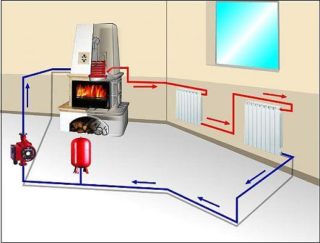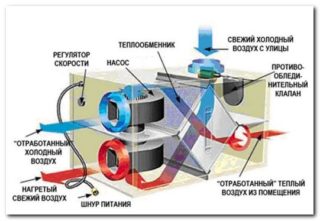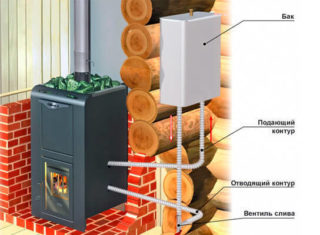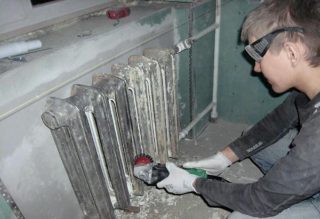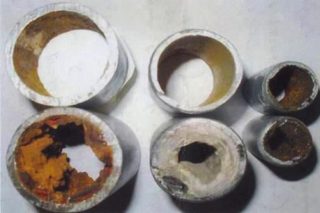Given the low quality of utilities and constantly growing bills for their provision, the owners of urban apartments are increasingly inclined to think about switching to autonomous heating. If during the construction of a suburban private house such a system is provided for by the project, then in multi-story buildings this requires special permission. Obtaining official paper is only the initial, albeit not the easiest, stage of remodeling housing. In order for individual heating in the apartment to perform its functions efficiently, you need to understand the features of the available equipment, its pros and cons, possible difficulties, ways to prevent and solve them.
Types of Autonomous Heating
Autonomous heating is a system independent of the communal network that provides real estate with heat. This design consists of a heating device, pipes and radiators. The difference is in the energy source and the coolant.
Traditional system
Traditional gas heating in an apartment building is a closed water circuit connected to a central water supply. The liquid is heated in the boiler, and the circulation is ensured by the temperature difference in different parts of the piping. Such a design can be called completely autonomous, conditionally, since its performance depends on the supply of water, electricity and gas to the building. In the absence of one component, the device turns off.
Advantages of the gas system:
- environmental friendliness, lack of harmful emissions;
- silent work;
- safety achieved by installing high-quality control devices;
- lack of need for expensive maintenance;
- long term of operation;
- tangible money savings.
Design disadvantages:
- costly and complicated installation;
- apartment repair is required after installation;
- regular inspections by controllers.
Gas systems have worked well, being the most popular and common structures in municipal buildings.
Air system
The design consists of a heating boiler, a supercharger and a duct system that runs through all rooms. After cooling, warm air passes through the filters, enters the heater, and again enters the rooms. As a heater, an electric spiral, gas or water circuit is used. To keep the air fresh, it is constantly taken from the street.
Advantages of the system:
- effective distribution of heated masses throughout the room;
- profitability due to controlled ventilation;
- simplicity and reliability of the design;
- lack of risk of defrosting;
- the ability to clean and sterilize air;
- ease of maintenance.
Cons of the design:
- dependence on electricity;
- bulkiness of air ducts;
- complexity with the combination of highways in the interior of the apartment.
When choosing autonomous equipment, one should take into account the noise factor that creates a fan and air moving through the channels.
Direct electric heating
Heating the housing with electricity is convenient in that you do not need to create complex and bulky circuits, become attached to water and gas. It is enough to purchase reliable cables and high-quality equipment.For heating rooms, convectors, fans, oil and infrared heaters, underfloor heating and heated towel rails are used.
Advantages of using electrical appliances:
- ecological cleanliness;
- noiselessness;
- reliability;
- no need to get permission;
- the ability to do it yourself;
- equipment mobility;
- no need for maintenance;
- use for heating water for domestic use.
Disadvantages of electrical equipment:
- shutdown when current is cut off;
- the need to lay a separate line, additional protective and distribution devices;
- large amounts of energy consumed, high electricity bills.
If you switch to this type of heating, you should leave the old water piping, installing plugs on it. If necessary, you can return to it by submitting an appropriate application to the management company.
Features of an autonomous heating system
A massive transition to stove gas heating in an apartment building was observed at the end of the last and the beginning of this century. This event was then banned, as problems began to arise with central supply. To install the boiler and refuse the services of the management company, it is necessary to obtain a decision of the city council, which always stands on the side of large service providers.
From the point of view of the consumer, individual heating in an apartment building has the following advantages:
- The possibility of making an independent decision as to when to start the heating season. At the same time, temperature, on and off times are available. And this can only mean an increase in the level of comfort of living.
- You need to pay only for the energy actually consumed. When using the services of public utilities, you have to pay for heat loss, profit of the organization and other related costs.
- Possibility of independent choice of heating technology and layout of heating elements. Selection of installation options not only for technical, but also for aesthetic criteria.
- Minimum and controlled energy consumption with high heat transfer. Setting the optimum temperature depending on the weather and physiological state.
The disadvantages are as follows:
- Dependence on centralized energy supplies. When the gas pressure drops or a power failure occurs, the boiler stops working.
- The high cost of the initial investment. It is necessary to pay for technical conditions, materials and equipment, the work of craftsmen and subsequent repairs, since installation is accompanied by damage to the finish.
- Regular inspections, checks and adjustments are required. All this requires a waste of time and money.
- The need to purchase and keep ready backup heaters. This is not only an additional financial cost, but also the allocation of space for their storage.
If you transfer the apartment to individual heating, the payback will come in 3-4 years. Then there will be savings in the range of 40-50% monthly. And this is without taking into account the level of comfort and opportunities that the system provides.
Boiler selection
In order to qualitatively heat the room, it is necessary to choose the right energy source. It is desirable that the flow of fuel to the boiler is constant.
The simplest solution is to install a solid fuel furnace that runs on coal or wood. For the arrangement of such a structure there is no need to obtain permission. In addition, there is no need to connect to the water supply.The closed loop is filled once, and then the water is poured in small portions as it evaporates from the expansion tank. The disadvantage of this option is the regular cleaning of the chimney and the rapid burnout of the fuel. The way out of the situation is the purchase of a long-burning furnace. At one gas station, a good hearth works up to 12 hours. You should constantly monitor the presence of coal and firewood, regularly replenishing their supply.
Electric boilers are compact and clean heating process. The incoming energy is unlimited, you only need to pay bills on time. In case of a trip, you can buy a small generator, which will find a place on the balcony or in the pantry. The downside is that electricity is expensive, the heating season will cost a round sum. Therefore, such systems in most cases are installed in non-gasified high-rise buildings.
Gas boilers are the most suitable choice for creating an individual heating system. Products are characterized by reliability, small size and high performance. Devices are completely safe thanks to automation, which turns off the gas supply when its pressure drops to a certain level. The downside is that you need to drill a hole in the wall to bring the chimney into the street. This negatively affects the strength of the supporting structures and the aesthetics of the facade.
Project development and installation work
It is necessary to plan the system of private heating of an apartment taking into account its area and planning features.
A project should be done taking into account the following restrictions:
- riser transfer;
- removal of heaters to the balcony;
- demolition of the partition between the kitchen and the living room;
- moving the bathroom.
When planning a strapping scheme, the choice is made from the following options:
- radiators - cast iron, steel, bimetal;
- pipes - plastic, brass, steel;
- method - one-pipe or two-pipe;
- circulation - natural or forced;
- wiring - top or bottom;
- connection - vertical or horizontal;
- decoupling scheme - with dead ends or walkways.
The pipe arrangement system is selected based on the length of the communications. Technical conditions are issued simultaneously with obtaining permission to carry out work.
The construction of an individual heating system is carried out in the following sequence:
- Dismantling of old communications. Using them further is impractical; it is better to put new and more effective ones. First, the batteries are disconnected, then the harness, and finally the pipes at the riser. The holes are welded tightly or a pipe with a thread for the plug is attached to them. In some cases, a part of the riser with bends is cut off and a new fragment is welded instead.
- The boiler is being installed. If necessary, a stable base is made for it next to the external wall. Then the product is aligned vertically.
- Radiators are installed. For their fastening, durable and reliable hooks with dowels or anchor products are used if work is carried out in a brick building.
- The harness is laid. Branches stretch across all rooms. It is advisable to use reinforced polypropylene pipes, which have the best characteristics compared to analogues. Assembly is carried out with a special soldering iron.
- Ball valves are installed in front of the batteries, after which they are connected to the feed and return.
- The tightness of the assembled circuit is checked. For this, a compressor with a manometer or soap foam is used.
- The boiler is connected via a meter to the gas line. A stopcock is installed on the pipe.
- The circuit is filled with water. Through Maevsky’s taps, air is bleeding.
The final step is to configure the equipment and test run. If it passes without complications, an act is drawn up on putting the system into operation.
